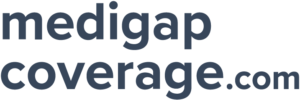Medicare Card

New and replacement Medicare Cards
Having a Medicare card is proof that you are enrolled in Medicare Part A or Part B health insurance – or both. It includes your date of enrollment and when your coverage kicked in. Once enrolled, a distinctive red, white, and blue Medicare card will arrive in the mail.Since it’s proof of your coverage, you should have it with you wherever you go.
Obviously, the most important time to have it handy is when visiting physicians, medical facilities, or lab locations. Remember this even after your doctor’s office makes a photocopy of your card. You never know when you may need to show it again.
How do I get my new Medicare Card?
Enrolling in what’s called Original Medicare, or Part A and Part B, happens automatically under the following conditions:
- At or after your 65th birthday when you’re already receiving Social Security orRailroad Retirement Board benefits. This is when your coverage activates. Expect to see your new Medicare card three months before you turn 65
- If you’ve been getting Social Security Disability benefits for 24 months and you are aged 65, you will receive your new Medicare card and start coverage on the 25th month after benefits began
- Automatic enrollment and coverage at or after you began receiving disability benefits for ALS.
If you’re not eligible for automatic Medicare enrollment you will have to sign up for OriginalMedicare to get your card and start coverage. These are two of the ways you would not qualify for automatic enrollment:
- You’re not 65 yet and aren’t getting Social Security or Railroad Retirement Board benefits. Here, you need to enroll for Medicare during your Initial Enrollment Period(IEP). Once you’ve enrolled, your card should arrive within 30 days of approval
- Patients with end-stage renal disease are entitled to enroll manually for OriginalMedicare (Part A and Part B) via Social Security either before or after their 65th birthday. A Medicare card will be sent post enrollment and once disability benefits start, coverage will begin
Medicare Advantage and Medicare Cards
Although your Medicare Advantage card will be your primary identification, you should still have your Original Medicare card with you in case a provider or facility asks for it. Also be sure to carry your Medicare Prescription Drug card with you, if you are enrolled in a plan.
Still confused? Call us!
We’re here at 833-245-0614 to answer any questions, and ready to help with any issues you might have with an insurer through the enrollment process.
Table of Contents
FAQs
What are the best Medicare supplement plans?
- Best overall Medicare supplement for new enrollees: Plan G.
- Best overall Medicare supplement before 2020: Plan F.
- Best low cost Medicare supplement: Plan K.
- Best alternative to Plan G Medicare supplement: Plan N.
What is a Medicare supplement plan?
Medicare Supplement policies are private health insurance designed to cover gaps in Original Medicare. They are also known as Medigap plans. These take care of costs such as copays, coinsurance, and deductibles which can become expensive if you need regular care from a doctor or hospital. If you need medical care while traveling outside the U.S., you can buy Medigap policies to help cover those costs. As a supplement to Original Medicare, you’re required to have Part A and Part B before you canget a Medigap policy. This way, Medicare is responsible for the Medicare-approved costs of the covered care, and the remainder is covered by your Medigap plan.
What is the most expensive Medicare supplement plan?
Optimal coverage comes with higher costs, making Plan F the most expensive Medigap plan. Plan F is known as “first-dollar coverage” and it takes care of everything provided during a doctor or hospital visit. Your only responsibility is for dental, vision, medications, and equipment, such as hearing aids.
Why is Plan F being discontinued?
The Federal government ended the Plan F option for new enrollees last year to keep the healthcare system from being overused by patients who had their deductibles covered. The next best coverage after Plan F is Plan G.
Is Plan G better than Plan F?
Medigap Plan G offers every advantage of Plan F except for the deductible, which you have to cover. Because it isn’t as comprehensive as Plan F, Plan G is more affordable.
What is the best and cheapest Medicare supplement insurance?
For people who don’t go to the doctor often, Plan K is worth considering. It is the most affordable because it provides just 50% of Medicare Part B coinsurance, the Part A deductible, blood, skilled nursing, and Part A hospice costs. For comparison, Plan G and others offer full coverage of these expenses, and more.
Is Medicare supplemental insurance worth it?
It’s hard to argue against plans which cut your traditional Medicare costs. For most people, having the extra coverage these supplemental plans provide is common sense, unless they want the specific features of a Medicare Advantage plan.
Do I really need supplemental insurance with Medicare?
Most people would benefit from not having to pay out-of-pocket to stay healthy. Medicare supplement insurance or a Medicare Advantage plan offer vital savings now, but are indispensable should a catastrophic health issue occur.
What is the most popular UnitedHealthcare Medicare Supplement plan?
Of the 10 Medicare-approved Medigap plans, Plan G and Plan N are the most popular. Plan F is no longer available to new Medicare enrollees as of 2020, but it is still popular among people who bought this plan prior to 2020.
How much does Medigap insurance cost?
- Plan F$128–$342
- Plan F (high deductible)$22–$88
- Plan G$106–$325
- Plan G (high deductible)$29–$58
Who qualifies for Medigap?
Before getting a Medicare supplement plan, you need to be enrolled in Medicare Part A (hospital insurance) and Part B (medical insurance). People with Medicare Advantage Plans who want to go back to Original Medicare can buy a Medigap policy prior to switching.
Is Medigap insurance worth the cost?
The security of having lower or no out-of-pocket healthcare costs can offset the premiums you’ll have to pay for whichever Medigap plan you choose, which vary depending on the benefits offered.
How Much Is Medigap per month?
The national average cost for Medicare Supplement Plan F is $1,824 annually, which is $152/month; Medigap Plan G will cost you around $143 per month.
Is Plan G the best Medigap plan?
Since Plan F was discontinued for new enrollees as of 2020, Plan G offers the most coverage for people 65 and older. It has a lower premium than Plan F and duplicates its benefits, except for the Part B deductible.
Is it better to have Medicare Advantage or Medigap?
It depends on your specific needs, but for most people a Medigap plan is very useful in supplementing the coverage of Medicare Part A and Part B. A Medicare Advantage plan is an affordable way to get healthcare coverage not offered by Original Medicare.
What is the most popular Medicare supplement plan?
Historically, Plan F has been the most popular because it covers all the out-of-pocket costs Medicare does’t pay for. This includes the 15% extra charge billed by providers who do not take Medicare as full payment.
Does Medigap cover prescription drugs?
Since January 1, 2006, no Medigap policy came with prescription drug coverage. You have two options to get covered, enrolling in either a Medicare Prescription Drug Plan (Part D) or a Medicare Advantage plan.

